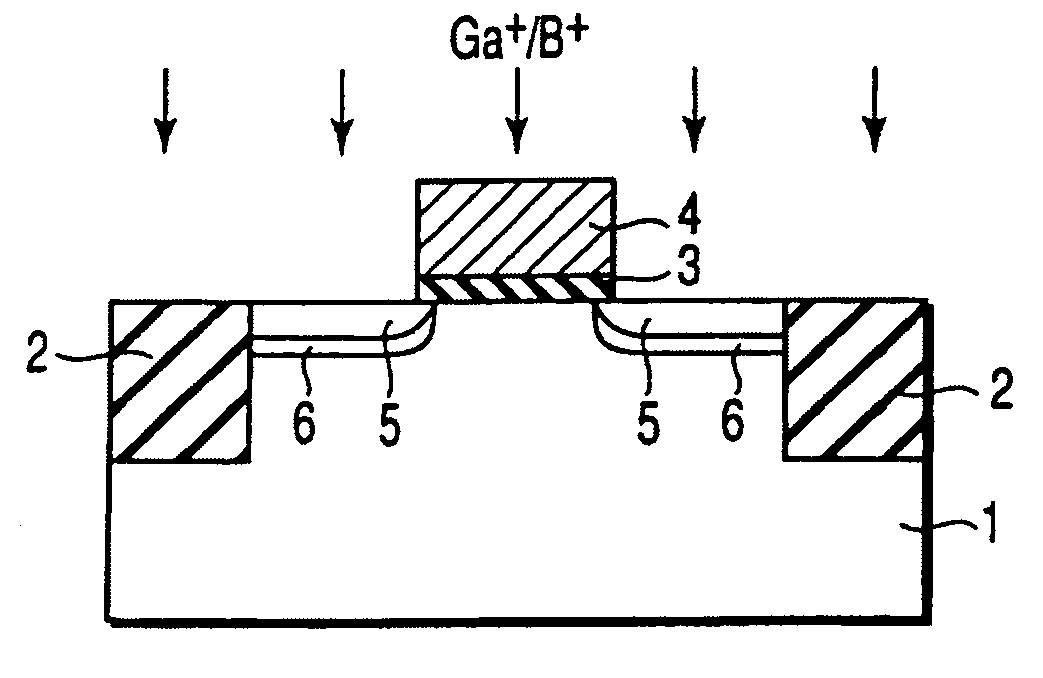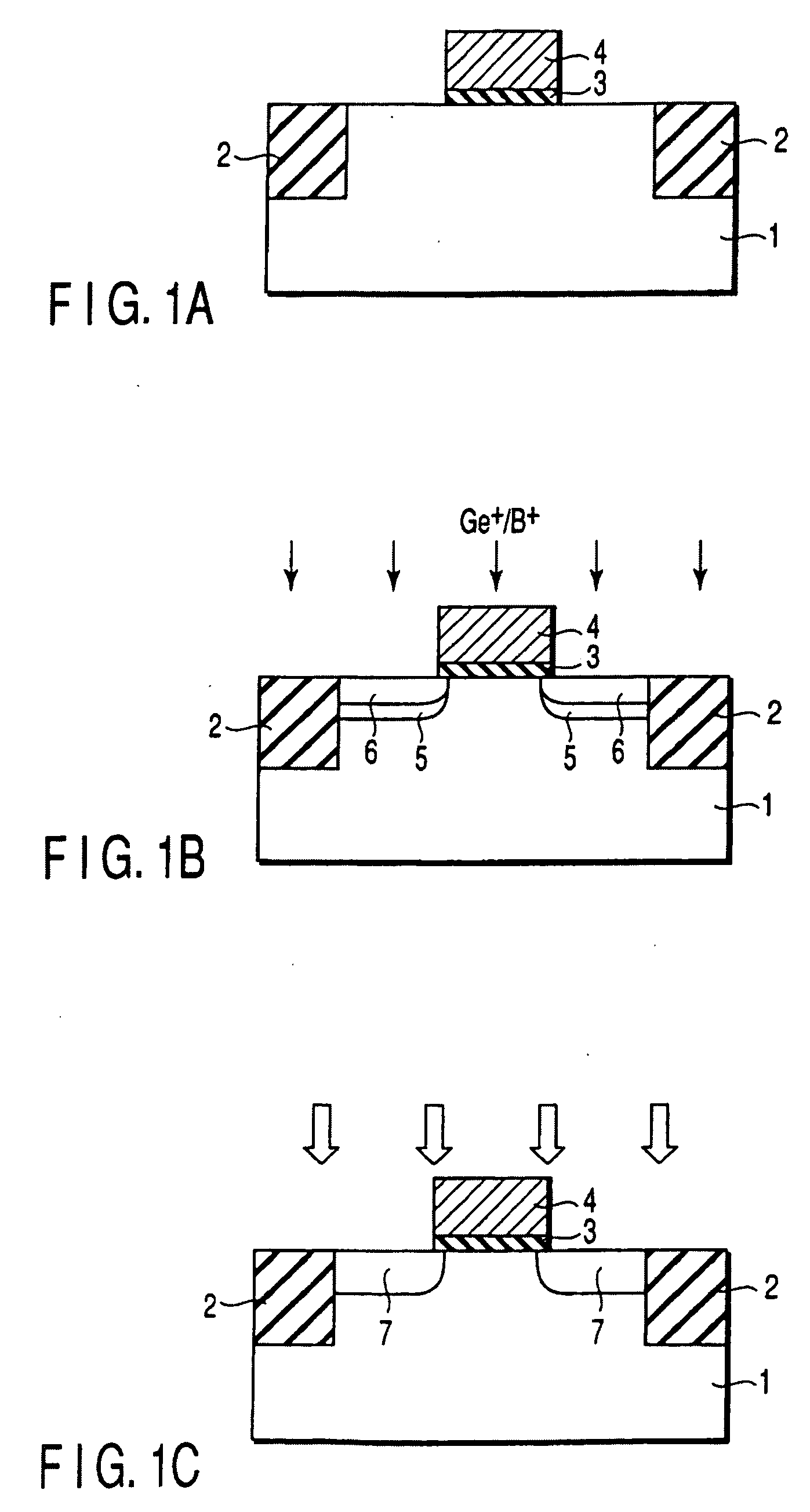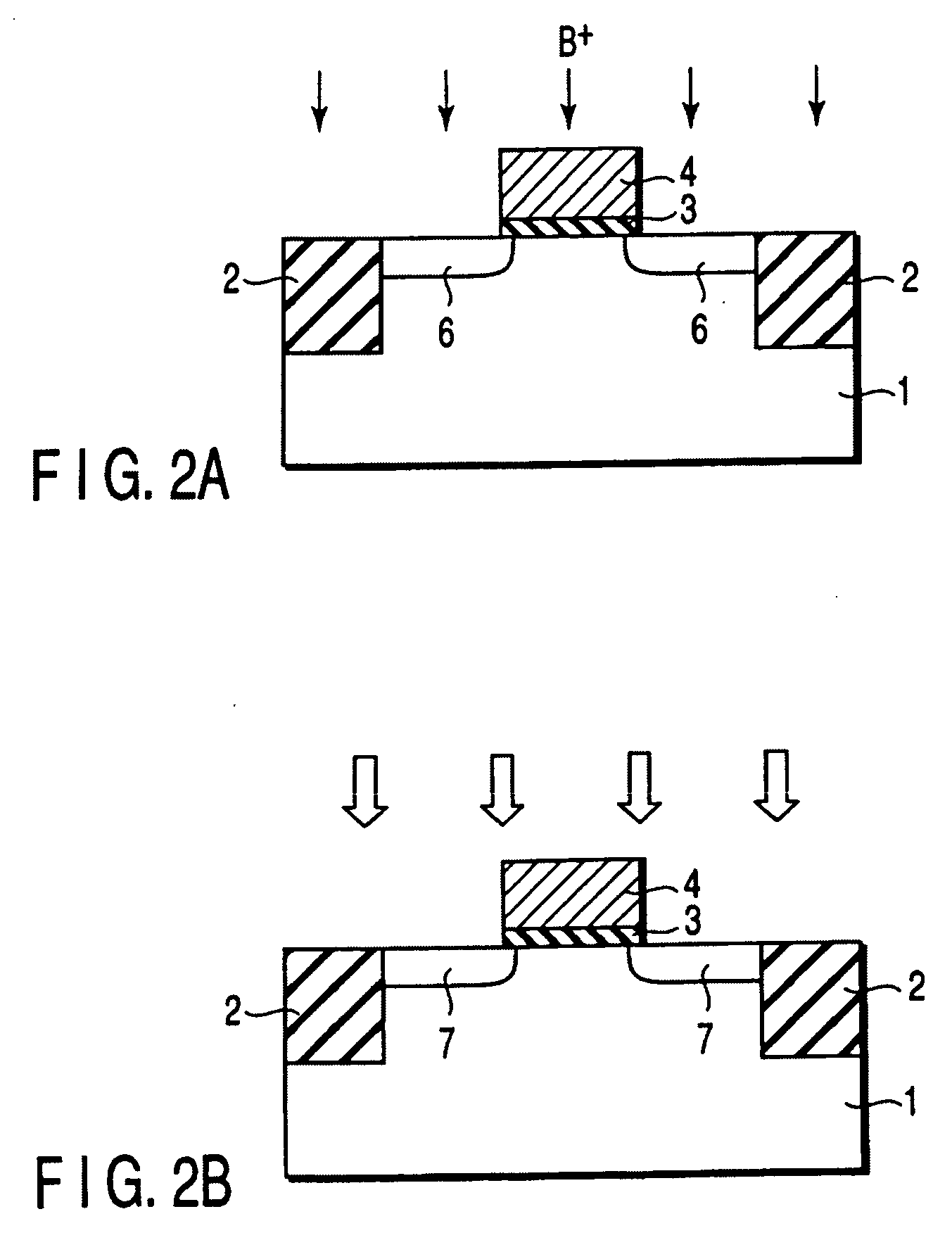Semiconductor device and method of manufacturing the same
a semiconductor and semiconductor technology, applied in the direction of semiconductor devices, electrical devices, transistors, etc., can solve the problems of large diffusion coefficient of impurities in silicon, low resistance, and difficult to obtain a shallow impurity diffusion layer , to achieve the effect of forming a shallow impurity diffusion layer having a junction of about 20 nm or less, and achieving the effect of small diffusion coefficien
- Summary
- Abstract
- Description
- Claims
- Application Information
AI Technical Summary
Benefits of technology
Problems solved by technology
Method used
Image
Examples
first embodiment
[0032]FIGS. 1A to 1C are sectional views showing a semiconductor device fabrication method according to the first embodiment of the present invention. This method will be explained by taking the fabrication steps of a p-type MOS transistor as an example.
[0033] First, as shown in FIG. 1A, in accordance with the conventional p-type MOS transistor fabrication method, isolation regions 2 are formed in an n-type silicon (Si) substrate 1. After that, a gate insulating film (silicon oxide film) 3 is formed, and a gate electrode 4 is formed on this gate insulating film 3.
[0034] Next, as shown in FIG. 1B, the gate electrode 4 is used as a mask to implant germanium (Ge) ions into the surface region of the n-type silicon substrate 1. The conditions of this ion implantation are an acceleration energy of 15 keV and a dose of 5×1014 cm−2. By this ion implantation, crystal defect regions 5 are formed in the surface of the silicon substrate 1. For example, amorphous crystal defect regions 5 are f...
second embodiment
[0052]FIGS. 10A to 10C are sectional views showing a semiconductor device fabrication method according to the second embodiment of the present invention. This method will be explained by taking the fabrication steps of a p-type MOS transistor as an example.
[0053] In this embodiment, an ion implantation region (Ge diffusion layer) of G (predetermined element) is shallower than an ion implantation region (B diffusion layer) of B (impurity element). More specifically, the density of Ge is made lower than that of B at the boundary (p-n junction boundary) between an n-type semiconductor substrate and a p-type B diffusion layer. From another viewpoint, a position at which the Ge density is equal to the B density at the p-n junction boundary is present between the surface of a semiconductor substrate and the p-n junction boundary. For example, the B density at the p-n junction boundary is about 1×1018 cm3. From still another viewpoint, a position at which the density distribution of Ge is...
third embodiment
[0069]FIGS. 12A to 12C are sectional views showing a semiconductor device fabrication method according to the third embodiment of the present invention. This method will be explained by taking the fabrication steps of p-type MOS transistor as an example.
[0070] In this embodiment, Ga is used instead of Ge as an element for forming crystal defect regions 5. Additionally, an ion implantation region (Ga diffusion layer) of Ga (predetermined element) is shallower than an ion implantation region (B diffusion layer) of B (impurity element).
[0071] First, as shown in FIG. 21A, in accordance with the conventional p-type MOS transistor fabrication method, isolation regions 2 are formed in an n-type silicon (Si) substrate 1. After that, a gate insulating film (silicon oxide film) 13 is formed, and a gate electrode 4 is formed on this gate insulating film 3.
[0072] Next, as shown in FIG. 12B, the gate electrode 4 is used as a mask to ion-implant Ga into the surface region of the n-type silicon...
PUM
 Login to View More
Login to View More Abstract
Description
Claims
Application Information
 Login to View More
Login to View More - R&D
- Intellectual Property
- Life Sciences
- Materials
- Tech Scout
- Unparalleled Data Quality
- Higher Quality Content
- 60% Fewer Hallucinations
Browse by: Latest US Patents, China's latest patents, Technical Efficacy Thesaurus, Application Domain, Technology Topic, Popular Technical Reports.
© 2025 PatSnap. All rights reserved.Legal|Privacy policy|Modern Slavery Act Transparency Statement|Sitemap|About US| Contact US: help@patsnap.com



